Entries for December 2013
2004 was a pretty good year for the NYC food scene. Among the openings were The Spotted Pig, Per Se, Momofuku Noodle Bar, and Shake Shack.
If there was a movement taking shape, its key players admit they didn’t notice until after the fact. And many of them spent the year struggling. Mr. Chang was desperate for customers in the early days at Noodle Bar, and kicking himself for having failed to apply for a kitchen job at Per Se or Masa. “I remember thinking very clearly, ‘What am I doing?’ ” he said. ” ‘This is stupid. I should be working at Masa!’ “
In some cases, 2004 was an outright fight. At the Spotted Pig, Mr. Friedman and Ms. Bloomfield, who had arrived from England, envisioned the vibrant boite as “a really cool bar that happened to have food as good as any restaurant in town,” Mr. Friedman said. “Who made the rule that you can’t have a real chef instead of someone who defrosts the frozen French fries?”
Quora user Murali Krishnan sifted through Q&A site Quora for the best answers and found 270 of them. Among the topics covered are technology, gender, the meaning of life, mathematics, travel, and looks like almost everything else, including some fascinating examples of ancient technology. Looks like one of my favorites didn’t make the cut: Domhnall O’Huigin’s answer to What is the political situation in the Mario universe?
In a feature straight out of the movies, Dr. Rob Jenkins and his team have demonstrated that for sufficiently high-resolution photos, recognizable images of reflected faces of the photographer and bystanders can be retrieved from a subject’s eyes.
The researchers say that in crimes in which the victims are photographed, such as hostage taking or child sex abuse, reflections in the eyes of the photographic subject could help to identify perpetrators. Images of people retrieved from cameras seized as evidence during criminal investigations could be used to piece together networks of associates or to link individuals to particular locations.
By zooming in on high-resolution passport-style photographs, Jenkins and co-researcher Christie Kerr of the School of Psychology, University of Glasgow were able to recover bystander images that could be identified accurately by observers, despite their low resolution.
Here’s some older research about reading confidential data using reflections from tea pots, glasses, eyes, and even diffuse materials like fabric. And of course, there’s the famous eBay tea kettle. (via waxy)
Currently out in theaters is The Secret Life of Walter Mitty, starring Ben Stiller and Kristen Wiig. The film is based on a short story of the same name by James Thurber, first published in the New Yorker in 1939 and available to read for free on their website.
“We’re going through!” The Commander’s voice was like thin ice breaking. He wore his full-dress uniform, with the heavily braided white cap pulled down rakishly over one cold gray eye. “We can’t make it, sir. It’s spoiling for a hurricane, if you ask me.” “I’m not asking you, Lieutenant Berg,” said the Commander. “Throw on the power lights! Rev her up to 8,500! We’re going through!” The pounding of the cylinders increased: ta-pocketa-pocketa-pocketa-pocketa-pocketa. The Commander stared at the ice forming on the pilot window. He walked over and twisted a row of complicated dials. “Switch on No. 8 auxiliary!” he shouted. “Switch on No. 8 auxiliary!” repeated Lieutenant Berg. “Full strength in No. 3 turret!” shouted the Commander. “Full strength in No. 3 turret!” The crew, bending to their various tasks in the huge, hurtling eight-engined Navy hydroplane, looked at each other and grinned. “The Old Man’ll get us through,” they said to one another. “The Old Man ain’t afraid of Hell!” …
Aaron Gordon of Sports on Earth watched 32 NFL games to determine the best and worst NFL announcers.
In general, there are three types of announcer comments: good, neutral and bad. Good statements offer some type of insight into the game. This is inherently subjective, since different people know different things. Neutral statements constitute the bulk of their utterances: neither offensive nor insightful. As a result, I decided to measure the bad statements.
I divided announcers’ verbal infractions into six categories that are not simply pet peeves, but likely to be annoyances for a majority of NFL viewers.
Happy to see Chris Collinsworth near the top of the heap…he’s my favorite and, while a bit goofy sometimes, offers the best post-Madden analysis in the game. Siragusa and Gruden are like nails on the chalkboard, surprised they didn’t rank much worse.
Who can resist reading a profile of the chocolate chip cookie when it contains delectable little morsels like this:
Wakefield’s cookie was the perfect antidote to the Great Depression. In a single inexpensive hand-held serving, it contained the very richness and comfort that millions of people were forced to live without in the late nineteen-thirties.
Happy 75th, cookie.
Magazine covers, movie posters, and book covers all have the same basic job, so it seemed proper to group these lists together: 50 [Book] Covers for 2013, The 20 best magazine covers of 2013, The 50 Best Posters Of 2013, Top [Magazine] Covers 2013, The Best Book Covers of 2013, The 30 Best Movie Posters of 2013, Best Book Covers of 2013. Lots of great work here. I still can’t figure out whether I love or hate this cover of W with George Clooney on it:

Covers for The Parisianer, an imaginary version of the New Yorker set in Paris.

An epic post on MetaFilter about the original Iron Chef, the cooking show that aired in Japan from 1993-1999. YouTube links to every show are included, so there’s your holiday viewing all sorted. Iron Chef is my all-time favorite food show. I learned a lot about cooking watching it.
Cartoonist Mike Holmes occasionally draws himself and his cat in the style of other cartoonists. He calls them Mikenesses. Here’s Holmes in the styles of Chris Ware, Aardman, and Berke Breathed:
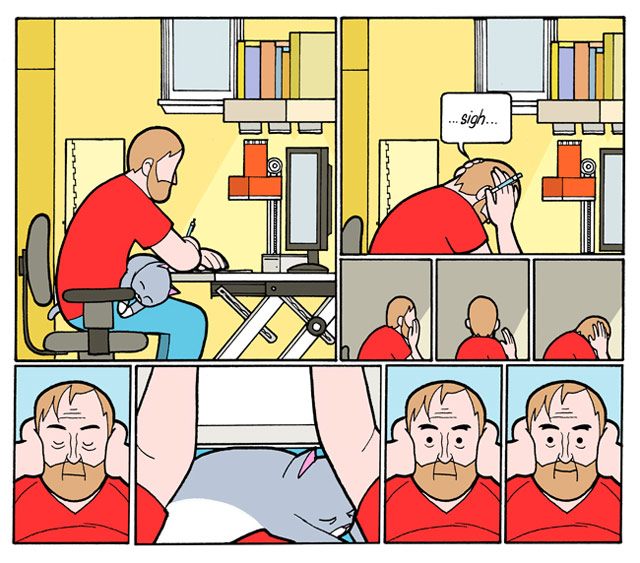

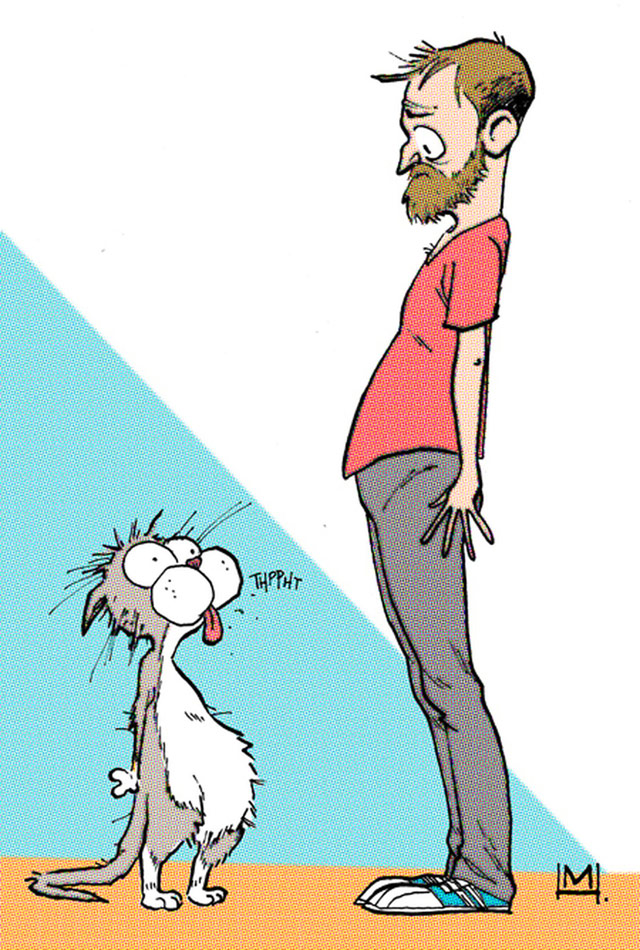
(via @H_FJ)
This oral history about Sir Mix-A-Lot’s hit Baby Got Back is way more interesting than it had any right to be.
Sir Mix-a-Lot: There was one event that really made me think that I should do a song about this, which was irritating the shit out of me. Amy and I were at a hotel on tour, when we saw one of the Spuds MacKenzie ads for Budweiser during the Super Bowl. You’d see these girls in the ad: Each one was shaped like a stop sign, with big hair [and] straight up-and-down bird legs. There’s nothing wrong with that, but I was so sick of that shit. Now, Amy never said anything about all this until she realized I was so in favor of her physique. She was an actress, and she started admitting that she felt like she lost a lot of parts because of her hourglass figure. I knew for a fact that many artists felt that if they didn’t use a skinny-model-type woman in their video, then mainstream America would reject the song. But I do not agree with that: If you look at Dolly Parton at her peak, a lot of white guys were like “daammn!” At the same time, when I did casting calls for videos, curvy women wouldn’t show up. They thought they didn’t have a chance. Unless you were in the hood, women who had curves — and I’m not talking about women who are shaped like me, with a gut, but women who ran five miles a day, with a washboard, six-pack stomach and a nice round, beautiful, supple ass — wore sweaters around their waist! Bottom line: Black men like curves. When they’re crooning to women about how beautiful they are in an R&B song, the ladies you see in the video don’t reflect what those guys like. Every time an R&B video was on, I heard women say, “I just saw him down in Oakland, and his girls wasn’t like that.” That made me think that this was more than a funny song, and it wrote itself.
Baby Got Back contributed to the cultural shift that changed that:
Sir Mix-a-Lot: Now, ass isn’t a big deal. I go to the gym, and I’ll hear a white girl saying to her trainer, “I want this to be round.” They realize that it doesn’t mean that you’re out of shape if you have a nice ass. Anybody who’s ever seen a stripper pick up a dollar bill with her ass knows you can’t do that with fat.
Trailer for It’s a Wonderful Life, recut in the style of the trailer for Scorsese’s The Wolf of Wall Street. Music is Black Skinhead by Kanye West.
At Serious Eats, Kenji Lopez-Alt turned 32 pounds of flour and other ingredients into more than 1500 cookies and in the process discovered how to make the perfect chocolate chip cookie.
You see, I’ve never been able to get a chocolate chip cookie exactly the way I like. I’m talking chocolate cookies that are barely crisp around the edges with a buttery, toffee-like crunch that transitions into a chewy, moist center that bends like caramel, rich with butter and big pockets of melted chocolate. Cookies with crackly, craggy tops and the complex aroma of butterscotch. And of course, that elusive perfect balance between sweet and salty.
Some have come close, but none have quite hit the mark. And the bigger problem? I was never sure what to change in order to get what I want. Cookies are fickle and the advice out there is conflicting. Does more sugar make for crisper cookies? What about brown versus white? Does it matter how I incorporate the chocolate chips or whether the flour is blended in or folded? How about the butter: cold, warm, or melted?
So many questions to ask and answers to explore! I made it my goal to test each and every element from ingredients to cooking process, leaving no chocolate chip unturned in my quest for the best. 32 pounds of flour, over 100 individual tests, and 1,536 cookies later, I had my answers.
Dang, this is like The Power Broker for baked goods, a cookie magnum opus.
Update: Back in 2007, my wife took a different approach to making the perfect chocolate chip cookie: she averaged the ingredients from 12 of the best cookie recipes she could find. The averaged recipe reads, in part:
2.04 cups all-purpose flour
0.79 tsp. salt
0.79 tsp. baking soda
0.805 stick unsalted butter, softened to room temperature
0.2737 stick unsalted butter, cold
0.5313 stick unsalted butter, melted
At Skeptical Sports, Benjamin Morris (who was just hired at FiveThirtyEight) has an extensive series of posts about Dennis Rodman. The conclusion he arrives at after many graphs and a dozen different posts is that Dennis Rodman was probably way better at whatever it was that Dennis Rodman did than any other NBA player was at what they did over the past 25 years.
While there may be room for reasonable disagreement about his character, his sportsmanship, or how and whether to honor his accomplishments, my research and analysis has led me to believe — beyond a reasonable doubt — that Rodman is one of the most undervalued players in NBA history.
I admit to not reading the whole series, but the ramifications of Rodman being “the best 3rd-best player” in the history of the NBA by a wide margin laid out in the finale was fascinating:
“Well, it’s not like he’s as valuable as Michael Jordan, but he’s the best 3rd-best player by a wider margin than Jordan was the best 1st-best player.”
“So you’re saying he was better than Michael Jordan.”
“No, I’m not saying that. Michael Jordan was clearly better.”
“OK, take a team with Michael Jordan and Dennis Rodman on it. Which would hurt them more, replacing Michael Jordan with the next-best primary scoring option in NBA history, or replacing Rodman with the next-best defender/rebounder in NBA history?”
“I’m not sure, but probably Rodman.”
“So you’re saying a team should dump Michael Jordan before it should dump Dennis Rodman?”
“Well, I don’t know for sure, I’m not sure exactly how valuable other defender-rebounders are, but regardless, it would be weird to base the whole argument on who happens to be the 2nd-best player. I mean, what if there were two Michael Jordan’s, would that make him the least valuable starter on an All-Time team?”
“Well OK, how common are primary scoring options that are in Jordan’s league value-wise?”
“There are none, I’m pretty sure he has the most value.”
“BALLPARK.”
“I dunno, there are probably between 0 and 2 in the league at any given time.”
“And how common are defender/rebounder/dirty workers that are in Rodman’s league value-wise?”
“There are none.”
“BALLPARK.”
“There are none. Ballpark.”
“So, basically, if a team had Michael Jordan and Dennis Rodman on it, and they could replace either with some random player ‘in the ballpark’ of the next-best player for their role, they should dump Jordan before they dump Rodman?”
“Maybe. Um. Yeah, probably.”
“And I assume that this holds for anyone other than Jordan?”
“I guess.”
“So say you’re head-to-head with me and we’re drafting NBA All-Time teams, you win the toss, you have first pick, who do you take?”
“I don’t know, good question.”
“No, it’s an easy question. The answer is: YOU TAKE RODMAN. You just said so.”
“Wait, I didn’t say that.”
“O.K., fine, I get the first pick. I’ll take Rodman… Because YOU JUST TOLD ME TO.”
“I don’t know, I’d have to think about it. It’s possible.”
“So there you go, Dennis Rodman is the single most valuable player in NBA History. There’s your argument.”
I loved watching Rodman play when he was on the Bulls. (One of my early web efforts was The Dennis Rodman Hair Page, which used JavaScript to change Rodman’s hair color.) The guy had such a weird role that he often seemed to be doing either the wrong thing or nothing. But the sheer number of rebounds and his defensive effort were hard to deny.
The discussion of Rodman’s worth reminds me a bit of Rickey Henderson, another unconventional player and a favorite of my pal David, who is always saying Henderson doesn’t get the credit he deserves as one of the best players of all time. (via @pieratt)
People waiting in line for food in the Soviet Union in the late 1980s:

The opening day line for the newest outpost of the Shake Shack in Moscow:

That’s nothing, though, compared to the line to get into the first McDonald’s in the Soviet Union, which opened in Moscow in 1990.
A year later in Moscow, an estimated 1.6 million people turned out to see Metallica in concert. Look at all those people:
Nieman Journalism Lab asked me to write a piece for their end of the year series, Predictions for Journalism in 2014. I don’t know a whole lot about journalism, so I wrote about something I’m pretty familiar with: The blog is dead, long live the blog.
Sometime in the past few years, the blog died. In 2014, people will finally notice. Sure, blogs still exist, many of them are excellent, and they will go on existing and being excellent for many years to come. But the function of the blog, the nebulous informational task we all agreed the blog was fulfilling for the past decade, is increasingly being handled by a growing number of disparate media forms that are blog-like but also decidedly not blogs.
Instead of blogging, people are posting to Tumblr, tweeting, pinning things to their board, posting to Reddit, Snapchatting, updating Facebook statuses, Instagramming, and publishing on Medium. In 1997, wired teens created online diaries, and in 2004 the blog was king. Today, teens are about as likely to start a blog (over Instagramming or Snapchatting) as they are to buy a music CD. Blogs are for 40-somethings with kids.
I am not generally a bomb-thrower, but I wrote this piece in a deliberately provocative way. Blogs obviously aren’t dead and I acknowledged that much right from the title. I (obviously) think there’s a lot of value in the blog format, even apart from its massive influence on online media in general, but as someone who’s been doing it since 1998 and still does it every day, it’s difficult to ignore the blog’s diminished place in our informational diet.
Through various blogrolls (remember those?) and RSS readers, I used to keep up with hundreds of blogs every day and over a thousand every week. Now I read just two blogs daily: Daring Fireball and Waxy. I check my RSS reader only occasionally, and sometimes not for weeks. I rely mainly on Twitter, Facebook, Digg, Hacker News, and Stellar for keeping up with news and information…that’s where most of the people I know do their “blogging”. I still read lots of blog posts, but only when they’re interesting enough to pop up on the collective radar of those I follow…and increasingly those posts are on Medium, Facebook, or Tumblr.1
But anyway, I’ll be here, blogging away until 2073. I figure 100 is a good age at which to retire. If I have a point to make, I’ll have made it by then. Man, I wonder what crazy YouTube videos there will be to post in 30 years? Probably Wes Anderson filming trials riding in a wingsuit on Mars or something. I can’t wait.
Artist Cy Kuckenbaker digitally reorganized the traffic in this video by color.
(via http://stellar.io/interesting)
As if wingsuit flying wasn’t insane enough, here’s a guy in a wingsuit flying down a trench in Chamonix, like he’s Luke trying to blow up the Death Star.
I don’t even. (via devour)
There was a bit of handwringing over the Apple video I posted yesterday…this Forbes piece was a typical take.
I caught it on TV last night, and I couldn’t disagree more. It’s called “Misunderstood,” as in misunderstood teenager. I found it depressing, upsetting, and a sad commentary on our social-, video- and image-obsessed culture. The goal, of course, was to market the wonder of the iPhone using the element of surprise: show a seemingly slacker teen disengaged from the goings-on of family life, his eyeballs glued to his iPhone-save for very fleeting moments-suddenly reveals to stunned family members a touching video he’d made of their Christmas merriment. That he’d been creating all day.
The problem is that while he was creating, he wasn’t really living the day, he was a mere voyeur during it. The message? Life is better through video. Don’t live life, tape it.
I admit I do this as much as anyone. We all love to photograph and record the activities and people we love. But lately I’ve been going to bed at night with that nagging feeling that I hadn’t lived enough and had spent too much time focused on a device. Seriously. Are we happy that this year’s Thanksgiving and Hanukkah was Instagram’s busiest ever? This commercial glorified that reality. And I don’t think it is a positive message.
John Dickerson reminds us you can live in the moment and capture it.
In “Why I Write,” Joan Didion explains, “I write entirely to find out what I’m thinking, what I’m looking at, what I see and what it means.” Hey, we’re all little Joan Didions! Well, not exactly, but if my theory sounds grandiose, go back to look at things you wrote a few years ago, if you can. When I look at the notes I’ve stopped to write in those books, entire worlds come back at me. “Watching the squirming foot of the resident during the circumcision,” I wrote while my son went through the procedure. I hadn’t thought about that moment since it happened, but that image of the nervous young doctor put me right back on the threshold of the small operating room 11 years ago. The set list from the Bob Dylan show at Madison Square Garden in November 2001 reminds me of my visit that day to ground zero. I’d forgotten that George Plimpton nearly ran me over riding down 54th Street on a bicycle. My wife’s malapropisms dot the books (“Hang up the towel,” “Breathing down my throat,” “Stick his neck out on a limb for me”). I recalled each dinner where they were minted, how we laughed over them and how she has the equanimity not to care.
Everything in moderation.
People are freaked out about the availability of sriracha sauce because a judge in California halted shipments of the trendy condiment until mid-January because of health concerns.
According the LA Times, the California Department of Public Health is enforcing a 30-day hold on the company’s products because no ingredients in their sauces are cooked. The idea is that the hold “helps ensure the sauce is free of harmful microorganisms for the duration of its shelf life” explains a DOH rep. While Huy Fong Foods expects shipments to resume normally following the hold, this is extremely bad news for distributors who are stuck without Sriracha.
But while the Huy Fong’s rooster sauce will be unavailable for awhile, plenty of other companies make sriracha…it’s like thinking you’ll have to go shoeless in the snow because you can’t buy Nikes for a month. For instance, try some of the other selections from this Serious Eats taste test from earlier this year. The Shark brand is even available on Amazon and will arrive in time for you to make your famous Volcanic Pigs in a Blanket for New Year’s Eve.
Ethen Godfrey Roberts pulled off a trick called a Superman double backflip the other day and it is a thing to behold:
Sploid says the trick “seems to murder the laws of physics” but if you can close your mouth long enough to stop drooling (this took me several views, BTW), the law of conservation of angular momentum is responsible for the optical illusion that makes the trick look so cool. The trick begins with a tight backwards flip, which happens quickly because all of the weight (human + bike) is distributed close to the center of gravity. By opening his body up in the middle part of the flip, Roberts slows down the rotation, just like a figure skater, diver, or ballerina would by throwing out their arms or legs. And then he gathers himself back onto the bike, which spins quickly again because the weight is all back close to the center. Boom, physics.
Backed up against a fence with no room to swing in a recent tournament, Matt Wheatcroft hit a shot straight out of Happy Gilmore, more miniature golf than golf.
(via devour)
These programs were never about terrorism: they’re about economic spying, social control and diplomatic manipulation. They’re about power.
In an open letter to Brazil, Edward Snowden appears to request asylum and offers to assist that country’s investigations into U.S. spying. Here’s the full text of Snowden’s letter.
An NSA coworker remembers Snowden:
NSA is full of smart people, but anybody who sat in a meeting with Ed will tell you he was in a class of his own…I’ve never seen anything like it.
Plants eat light, grow almost everywhere on Earth, and make up 99% of the planet’s biomass. But do what extent do plants think? Or feel? Michael Pollan tackles the question of plant intelligence in a thought-provoking article for the New Yorker (sadly behind their paywall).
Indeed, many of the most impressive capabilities of plants can be traced to their unique existential predicament as beings rooted to the ground and therefore unable to pick up and move when they need something or when conditions turn unfavorable. The “sessile life style” as plant biologists term it, calls for an extensive and nuanced understanding of one’s immediate environment, since the plant has to find everything it needs, and has to defend itself, while remaining fixed in place. A highly developed sensory apparatus is required to locate food and identify threats. Plants have evolved between fifteen and twenty different senses, including analogues of our five: smell and taste (they sense and respond to chemicals in the air or on their bodies); sight (they react differently to various wavelengths of light as well as to shadow); touch (a vine or root “knows” when it encounters a solid object); and, it has been discovered, sound.
In a recent experiment, Heidi Appel, a chemical ecologist at the University of Missouri, found that, when she played a recording of a caterpillar chomping a leaf for a plant that hadn’t been touched, the sound primed the the plant’s genetic machinery to produce defense chemicals. Another experiment, dome in Mancuso’s lab and not yet published, found that plant roots would seek out a buried pipe through which water was flowing even if the exterior of the pipe was dry, which suggested that plants somehow “hear” the sound of flowing water.
One of the researchers featured in the article, Stefano Mancuso, has a TED talk available in which he outlines his case for plant intelligence:
The article also discusses if plants have feelings. If so, should we feel bad that our wifi routers might kill plants?
Update: Mancuso and Alessandra Viola have collaborated on a new book about the intelligence of plants, Brilliant Green: The Surprising History and Science of Plant Intelligence.
There’s art on the Moon, a small sculpture called Fallen Astronaut. Artist Paul van Hoeydonck made it. Commander David Scott of Apollo 15 placed it on the Moon in 1971. Instead of a triumph, the whole thing fell into scandal and was forgotten.
In reality, van Hoeydonck’s lunar sculpture, called Fallen Astronaut, inspired not celebration but scandal. Within three years, Waddell’s gallery had gone bankrupt. Scott was hounded by a congressional investigation and left NASA on shaky terms. Van Hoeydonck, accused of profiteering from the public space program, retreated to a modest career in his native Belgium. Now both in their 80s, Scott and van Hoeydonck still see themselves unfairly maligned in blogs and Wikipedia pages-to the extent that Fallen Astronaut is remembered at all.
And yet, the spirit of Fallen Astronaut is more relevant today than ever. Google is promoting a $30 million prize for private adventurers to send robots to the moon in the next few years; companies such as SpaceX and Virgin Galactic are creating a new for-profit infrastructure of human spaceflight; and David Scott is grooming Brown University undergrads to become the next generation of cosmic adventurers.
Governments come and go, public sentiment waxes and wanes, but the dream of reaching to the stars lives on. Fallen Astronaut does, too, hanging eternally 238,000 miles above our heads. Here, for the first time, we tell the full, tangled tale behind one of the smallest yet most extraordinary achievements of the Space Age.
According to developmental psychologist Richard Tremblay, violent criminals are basically toddlers who never grew up and never outgrow their tendency to use physical aggression to get what they want.
The study tracked behavior in 1,037 mostly disadvantaged Quebec schoolboys from kindergarten through age 18. The boys fell into four distinct trajectories of physical aggression.
The most peaceable 20 percent, a “no problem” group, showed little physical aggression at any age; two larger groups showed moderate and high rates of aggression as preschoolers. In these three groups violence fell through childhood and adolescence, and dropped to almost nothing when the boys reached their 20s.
A fourth group, about 5 percent, peaked higher during toddlerhood and declined far more slowly. Their curve was more plateau than hill.
As they moved into late adolescence and young adulthood, their aggression grew ever more dangerous, and it tailed off late. At age 17 they were four times as physically aggressive as the moderate group and committed 14 times as many criminal infractions. It’s these chronically violent individuals, Dr. Tremblay says, who are responsible for most violent crime.
So, there’s the famous 1984 Super Bowl commercial for the Macintosh. There was the Think Different campaign. And the Mac vs. PC ads. But I think Apple’s newest effort, Misunderstood, is perhaps their best ad ever:
Or maybe I’m the biggest sap in the world…either way, I’m totally crying at work.
ps. But of course, that can’t be the best Apple advertisement ever because that title will always and forever be taken by a drunk Jeff Goldblum extolling the virtues of the iMac’s internet capabilities:
Great, now I’m crying from laughing at work.
Alex is 2-year-old Henry’s nanny. She’s also a photographer. One day, at Henry’s behest, the pair took photos of each other in the same pose. It turned into a project called Henry’s Concepts.

Each of these photos is strictly Henry’s idea. He chooses the location and the pose. I take the photo of him and then he takes the photo of me.
(via cup of jo)
For the Oobject gift guide this year, “almost nothing is affordable”. Items include a bank vault door from the 1920s ($50,000), JFK’s chess set ($475,000), and a console for the Hubble Space Telescope ($75,000).

It’s more a nerd wish list than gift guide, the opposite of Tyler Brûlé’s effort, penned from the empty upper deck (first class, naturally) of a flight to Singapore. Brûlé’s earnest advice for your holiday shopping? Build a house in Australia for next year’s holidaymaking:
With a bit of planning and a good construction team you could surprise friends and family by commissioning Brisbane-based architects Richards & Spence to build you a little beachside compound somewhere in Queensland. This year you could roll up a set of plans to place under the tree with a promise that this time next year you’ll all be wandering around in kaftans and low-slung trunks drinking fancy, fruity cocktails.
Sounds brill.
12 O’Clock Boys is a documentary about an Baltimore dirt-bike gang.
Pug, a wisecracking 13 year old living on a dangerous Westside block, has one goal in mind: to join The Twelve O’Clock Boys; the notorious urban dirt-bike gang of Baltimore. Converging from all parts of the inner city, they invade the streets and clash with police, who are forbidden to chase the bikes for fear of endangering the public. When Pug’s older brother dies suddenly, he looks to the pack for mentorship, spurred by their dangerous lifestyle.
(via @aaroncoleman0)
Christoph Niemann uses cookie dough, cookie cutters, and sprinkles to recreate the Bible’s book of Genesis. More or less.
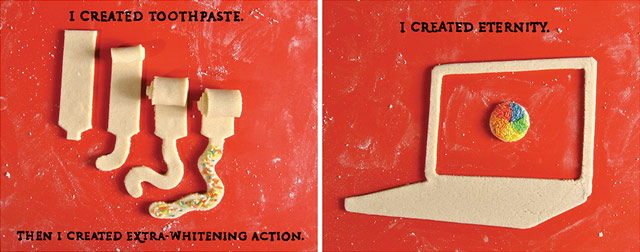
Bitcoin is a digital currency that has increased in value in US$ by 900% over the past six months. Jason Kuznicki says Bitcoin is definitely a speculative bubble and has three graphs to illustrate his point. I found this one particularly interesting…it plots transactions vs. total Bitcoin market cap:
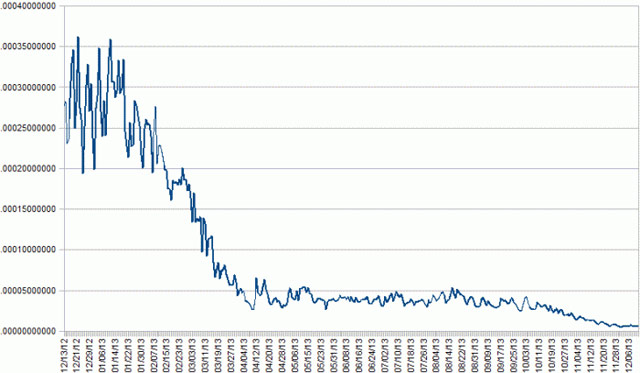
This chart shows a dramatic reduction in the total number of transactions, irrespective of size, per dollar of bitcoin’s market cap, from December 2012 — December 2013. In absolute terms, market cap has generally gone up, and the number of transactions has mostly just bounced around a lot. The total value of bitcoin is going up, but it’s mostly getting parked rather than being put to work. Apparently there just aren’t a lot of appealing ways to spend bitcoin, anecdotal news stories to the contrary notwithstanding.
Instead, an increasing amount of bitcoin’s putative value (as measured in USD) is being squirreled away by larger and larger miner-investors. It’s not fueling a diversifying, all-bitcoin economy: if it were, transactions would be keeping up with or even outpacing market cap, particularly if bitcoiners came to rely increasingly on bitcoins and decreasingly on dollars for day-to-day purchases. That’s very clearly not happening.
The Wire’s Omar Little once said to Marlo Stanfield, “Man, money ain’t got no owners, only spenders.” Bitcoin seems to have the opposite problem. (via mr)
Goalies in the NHL didn’t used to wear masks…they didn’t become common until the 60s. For an article in 1966, Life magazine had a professional make-up artist recreate the injuries and more than 400 stitches that goalie Terry Sawchuk accumulated during his 16-year NHL career.

Sawchuk has sustained other injuries not shown here: a slashed eyeball requiring three stitches, a 70% loss of function in his right arm because 60 bone chips were removed from his elbow, and a permanent “sway-back” caused by continual bent-over posture.
Milos Rajkovic, aka Sholim, creates Terry Gilliam-esque cutout animations of people’s heads.
The animated GIF versions are available on Tumblr.
About half an hour ago, Beyonce surprised the world (the internet, really) by releasing her 5th album on iTunes. There are 14 songs and videos for every song. Just two days ago, Rolling Stone reported on Columbia Records Chairman Rob Stringer saying, “At some point, Beyonce will put a record out, and when she does, it will be monumental” interpreting that to mean ‘sometime in 2014.’ Not exactly.
I tried to find another example of a musician releasing a surprise album, but the results are polluted with references to Paul Simon’s ‘Surprise,’ which was likely no surprise at all.
Update: Last year at a show in Boston, Godspeed You! Black Emperor started selling copies of their unannounced new album. (thx, tomm)
Update: NME has a list of some other surprise albums. (via @kayluhb)
The Leap Motion is a motion controller for the Mac or PC which lets you control on-screen action through hand movements and gestures. Freeform is an app that unleashes your inner Michelangelo, allowing you to sculpt 3D objects on the screen much like you would if a hunk of clay were sitting in front of you.
(via prosthetic knowledge)
Robert McGinley Myers writes about his high-end audio gear addiction, happiness, and the placebo effect.
Maybe each of these activities (listening to high end audio gear, drinking high end wine, having needles inserted into your chakras) is really about ritualizing a sensory experience. By putting on headphones you know are high quality, or drinking expensive wine, or entering the chiropractor’s office, you are telling yourself, “I am going to focus on this moment. I am going to savor this.” It’s the act of savoring, rather than the savoring tool, that results in both happiness and a longer life.
Working for CBS and later on his own in the 40s and 50s, sound engineer Charley Douglass perfected the laugh track technique, which was then called sweetening. His secret weapon was the laff box, a machine that you could use like a typewriter to produce the type and sequence of laughter you needed for a particular situation. Here’s how the machine worked:
The one-of-a-kind device — affectionately known in the industry as the “laff box” — was tightly secured with padlocks, stood more than two feet tall, and operated like an organ. Only immediate members of the family knew what the inside actually looked like (at one time, the “laff box” was called “the most sought after but well-concealed box in the world”). Since more than one member of the Douglass family was involved in the editing process, it was natural for one member to react differently to a joke than another. Charley himself was the most conservative of all, so producers would put in bids for other editors who were more liberal in their choice of laughter. Douglass used a keyboard to select the style, gender and age of the laugh as well as a foot pedal to time the length of the reaction. Inside the machine was a wide array of recorded chuckles, yocks, and belly laughs; exactly 320 laughs on 32 tape loops, 10 to a loop. Each loop contained 10 individual audience laughs spliced end-to-end, whirling around simultaneously waiting to be cued up. Since the tapes were looped, laughs were played in the same order repeatedly. Sound engineers would watch sitcoms and knew exactly which recurrent guffaws were next, even if they were viewing an episode for the first time. Frequently, Douglass would combine different laughs, either long or short in length. Attentive viewers could spot when he decided to mix chuckles together to give the effect of a more diverse audience.
I found out about the laff box from Kevin Slavin & Kenyatta Cheese’s talk about how, with the Internet, the audience now has an audience.

A cafe in Nice, France charges rude customers five times more for a cup of coffee than those who say hello and please.
“A coffee” will set you back €7, according to the sign, while “a coffee please” is a little more affordable, at €4.25.
If you want keep your expenses down, and stay friends with your local barista, however, the best option is “Hello, a coffee please,” which will only cost you €1.40.
The manager says that although the pricing scheme has never been enforced, customer civility is up. Cheekiness is on the rise as well:
“Most of my customers are regulars and they just see the funny side and exaggerate their politeness,” he said, adding “They started calling me ‘your greatness’ when they saw the sign.”
(via eater)
From Kacper Kiec, digital splatter images of superheroes.


Jason Segel is set to play David Foster Wallace in a movie adaptation of David Lipsky’s Although Of Course You End Up Becoming Yourself.
Story finds Lipsky accompanying Wallace across the country on a book tour promoting “Infinite Jest,” just as Wallace starts to become famous. Along the way, jealousy and competition bubbles up between the two writers as they discuss women, depression and the pros and cons of fame.
Reaction from the DFW fan club abut Segel playing DFW has been tepid, to say the least.
George Takei, in case you don’t know, played Hikaru Sulu on the original Star Trek series. Nowadays, he is a relentless tweeter of internet memes. But he’s also a top-1000 reviewer at Amazon, where he writes humorous reviews of some of retail giant’s most unusual products. Like an inflatable human hamster ball:
When Brad asked what I wanted for my birthday, I said “jet pack,” just like I have for the past four years. Now, Brad thinks I’m too far into my “Golden Years” to strap on any kind of propulsion unit, so each year his gifts have been disappointing: A bow-tie. A snuggie. Gel insoles.
Imagine my delight when I came home to the ZORB HUMAN HAMSTER BALL in our back yard. “Not as good a jet pack,” Brad noted, shrugging. “But safer.”
Brad was a bit winded after blowing it up for six hours (I recommend an air pump), so we left it inflated. We strapped it to our car roof using the 120 left-over bungee cords from our home bungee jumping kit (I would NOT recommend this product). We then drove up to the Hollywood Hills sign for a test roll.
And uranium ore (real radioactive uranium ore):
Brad and I figured it would be poetic justice to tuck one of these babies, along with a DVD of hard core gay porn, inside a gift basket sent to our favorite Iranian madman, ex-President Mahmoud Ahmadinejad, during his last rant-filled visit to the UN. Just a small token of our esteem and thanks, you understand, for torturing and hanging those two gay teens.
And my personal favorite Amazon item, the 55-gallon drum of lube:
Brad and I will be Grand Marshals at this year’s San Diego Pride Parade, and we were looking for just the right touch to add a bit of pizazz to our appearance. So when we stumbled across the PASSION NATURAL WATER BASED LUBRICANT - 55 GALLON drum, we felt we’d struck gold: “Just enough volume to soak an entire parade of spectators, and yet fits easily in our float.” Double win.
Newt Gingrich has actually reviewed many more items on Amazon, but his are a lot less fun.
Communications agency Quietroom came up with a tongue-in-cheek set of brand guidelines for Santa Claus outlining a brand refresh for the jolly Pole dweller.

Eric Hollenbeck is a master woodworker who owns and operates the Blue Ox Millworks in Eureka, CA. The Ox is a lovely short film about Hollenbeck directed by Ben Proudfoot, who previously made the equally lovely ink&paper.
This morning, Time magazine named Pope Francis their Person of the Year.
He took the name of a humble saint and then called for a church of healing. The first non-European pope in 1,200 years is poised to transform a place that measures change by the century.
On Monday, The New Yorker’s John Cassidy argued that Edward Snowden deserved the honor.
According to Time, its award, which will be bestowed on Wednesday, goes to the person who, in the opinion of the magazine’s editors, had the most influence on the news. By this metric, it’s no contest. In downloading thousands of files from the computers of the electronic spying agency and handing them over to journalists like Glenn Greenwald, Laura Poitras, and Barton Gellman, Snowden unleashed a torrent of news stories that began in May, when the Guardian and the Washington Post published a series of articles about the N.S.A.’s surveillance activities. Seven months later, the gusher is still open. Just last week, we learned that the agency is tracking the whereabouts of hundreds of millions of cell phones, gathering nearly five billion records a day.
Agreed.
In a fly-by of Earth on its way to Jupiter, NASA’s Juno probe took a short movie of the Moon orbiting the Earth. It’s the first time the Moon’s orbit has been captured on film.
(via @DavidGrann)
Watch as a trio of trials riders zoom across rusty old bridges, up rocky mountains, and down dry water slides on skinny-tired road bikes. An eye-popping collection of tricks.
There’s a bit of a backstory to this video. It’s a sequel to a similar video performed solo by Martyn Ashton. In the middle of filming this sequel, Ashton broke his back during a demonstration and is currently paralyzed from the waist down. Friends and fellow trials riders Chris Akrigg and Danny MacAskill stepped in to help Ashton complete the video. (via digg)
In thinking about what sort of holiday gift guide (I know, I know) to do, I settled upon doing what I usually do here: highlight other people’s guides and sprinkle in a bit of my own perspective here and there. Here goes.
Somewhat awkwardly, I’m gonna lead with my friend Jake’s advice: don’t buy anything for anyone for the holidays. Instead, give something to charity in their name/stead/honor/whatever. Check out Charity Navigator or GiveWell for good donation options or make a microloan. Any family or friends who think you’re a jerk for doing this are annoying and you should make new friends and find a different family. (To be fair, Jake also recommends these two powered skateboards, Boosted Board ($1300) and Z-Board ($649+) so he’s not entirely a Scrooge McBlog.)

If you have little kids, put Tattly temporary tattoos ($5) in their stockings. They even have a yearly subscription ($60/yr) available for the holidays. These are always a big hit around our house.
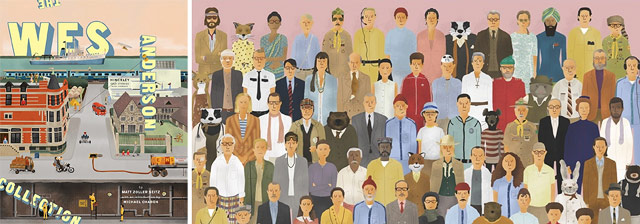
When I do feel the need to buy things (which I rarely do), The Wirecutter is my spirit guide. This year, they have a proper gift guide and a list of the best holiday deals available on the Internet; both are great. Too much on these lists to pick just a few items but here goes: WD My Passport Ultra 2TB Portable External Hard Drive ($115), Geek Dad: Awesomely Geeky Projects and Activities for Dads and Kids to Share ($10), The Wes Anderson Collection ($24) is a no-brainer, and the Blade Nano QX RTF quadracopter ($90).

Star Wars fans, you can buy the actual blaster used by Han Solo in Empire and Jedi ($200,000+). Hey, it’s cheaper than the Death Star.
Tinybop’s Things We Love highlights many great things for the younger set. Two items that popped out at me from this list are James Mollison’s Where Children Sleep ($22), a collection of large-format photographs of children’s bedrooms from around the world, and Who Needs Donuts? ($14), a reissue from the year of my birth.

Two things I love recommending as gifts for food & drink folks: Tovolo King Cube Ice Tray ($9) for making those big cocktail ice cubes at home and the KitchenAid Professional 600 Series 6-Quart Stand Mixer ($400). This year, I’ll add two more: Hella Bitter Salt & Pepper pack of aromatic and citrus bitters ($19) and the Anova Sous Vide Immersion Circulator ($205), which The Sweethome recommends as the best budget sous vide thinger out there.
Boing Boing Gift Guide 2013 is full of the expected quirky gifts. Among them are Palomino Blackwing 602 pencils ($23 for 12)…I have some of these and they are great, LifeSpan Fitness TR1200-DT5 Treadmill desk ($2350+), and a 55-gallon drum of Passion Natural Water-Based Lubricant ($1250) previously highlighted here on kottke.org.
If I read more books, I’d definitely pick up a Kindle Paperwhite ($119+). Is there any way to buy more time to read books? Can someone get me that for the holidays?
For your sportsball friends and family, rely on the 2013 SB Nation Holiday Gift Guide. Some items of note include a motorized Cooler Scooter ($400+) for tailgating and Flip Flop Fly Ball: An Infographic Baseball Adventure ($19).
You’ve likely seen the (probably staged) letter to Santa that’s mostly a long Amazon URL written out in crayon. Here’s what the kid wanted: Kid Galaxy Morphibians Killer Whale ($21), a remote-controlled car.
For the booze hound in your life, get a bottle of W.L. Weller 12 Year Kentucky Straight Wheated Bourbon Whiskey ($29). According to these guys, it’s the same stuff as the highly coveted Pappy Van Winkle 15 Year ($890) but aged three fewer years and a whole lot cheaper.

By a wide margin, the thing that has provided me with the most joy in 2013 is Rdio ($5+/mo). This musical buffet has big-time rekindled my interest in music of all shapes and sizes. My musical diet, a bloated spreadsheet of old favorites, had grown stale over the past few years. Now I love playing stuff on Rdio for the kids in the morning while they have breakfast and I make their lunch…we sing along to Burl Ives, Mary Poppins, and Lorde. I listen all day at work to writing/coding music. Dinners are accompanied by music tuned to the food (I found a corny Italian dinner playlist to go along with some homemade gnocchi; it was perfect). I’m filling in the gaps in my musical listening, including post-Chronic rap & hip-hop. I’d happily pay $50/mo for Rdio…it’s that valuable to me.
I don’t have a lot of time for many magazines anymore, but Lucky Peach ($28 for 4 issues) continues to knock it out of the park. Runners up: subscriptions for National Geographic ($15/yr) and Wired ($5 for 6 mo of print/digital) at Amazon are super reasonable.
In a clip from The Daily Show in August, Jessica Williams completely skewers the Bloomberg administration’s asinine stop-and-frisk policing by advocating for a stop-and-frisk policy for white collar criminals on Wall Street (aka Business Harlem).
[Deleted the embed because of some reports of autoplaying. Why can’t anyone but YT and Vimeo get this right?]
Ok, bear with me here…this is a video of a helicopter harvesting Christmas trees in Oregon. But the pace at which the pilot is moving those trees into the trucks is almost literally unbelievable.
(via @jchristopher & @cdevroe)
Update: And here’s the helicopter cockpit view from a similar harvest:
(via @iEddyG)
We are divided by an increasingly wide income gap. Often, this gap can be seen from across a street or park (even if we sometimes try not to look). The NYT takes us for a journey into the world of a homeless girl named Dasani in a multipart piece called Invisible Child:
On the Brooklyn block that is Dasani’s dominion, shoppers can buy a $3 malt liquor in an airless deli where food stamps are traded for cigarettes. Or they can cross the street for a $740 bottle of chardonnay at an industrial wine shop accented with modern art.
Here’s David Simon, creator of The Wire, on the two Americas:
I live in one, on one block in Baltimore that is part of the viable America, the America that is connected to its own economy, where there is a plausible future for the people born into it. About 20 blocks away is another America entirely. It’s astonishing how little we have to do with each other, and yet we are living in such proximity.
Inspired by the A History of the World in 100 Objects project done by the BBC and the British Museum, Adrian Hon presents A History of the Future in 100 Objects, presented from the perspective of someone writing in 2082. From the introduction:
Every century is extraordinary, of course. Some may be the bloodiest or the darkest; others encompass momentous social revolutions, or scientific advances, or religious and philosophical movements. The 21st century is different: it represents the first time in our history that we have truly had to question what it means to be human. It is the stories of our collective humanity that I hope to tell through the hundred objects in this book.
I tell the story of how we became more connected than ever before, with objects like Babel, Silent Messaging, the Nautilus-3, and the Brain Bubble - and how we became fragmented, both physically and culturally, with the Fourth Great Awakening, and the Biomes.
With the Braid Collective, the Loop, the Steward Medal, and the Rechartered Cities, we made tremendous steps forward on our long pursuit of greater equality and enlightenment — but the Locked Simulation Interrogations, the Sudan-Shanghai Letter, the Collingwood Meteor, and the Downvoted all showed how easy it was for us to lapse back into horror and atrocity.
We automated our economy with the UCS Deliverbots, the Mimic Scripts, the Negotiation Agents, and the Old Drones, destroying the entire notion of work and employment in the process; and we transformed our politics with Jorge Alvarez’s Presidential Campaign, and the Constitutional Blueprints.
The book is available on the Kindle.
The teeterboard is an acrobatic apparatus that looks like a seesaw. This is a pair of acrobats training on a Korean-style teeterboard, where instead of getting catapulted off the board, the participants land back on the board after each jump:
In the early 1960s, French director Jean-Luc Godard put together a list of the Ten Best American Sound Films. The list included:
The Great Dictator (Charles Chaplin)
Vertigo (Alfred Hitchcock)
Singin’ in the Rain (Kelly-Donen)
The Lady from Shanghai (Orson Welles)
The list appeared as one of a series in Cahiers du Cinema, the influential French film magazine. (via @DavidGrann)
Using a black & white workprint of The Dark Crystal that Jim Henson and Frank Oz wanted to release, YouTube user scoodidabop made a full-length director’s cut of the film. It’s a bit rough in spots, but the original vision is all there.
Production was supposed to have begun on a Dark Crystal sequel, but according to the Muppet Wiki, the project has been shelved.
Vimeo user Subterminally appears to have had the worst 13 seconds of his life last week when he hit the cliff off of which he was base jumping. Subterminallyill received a “Compression Fracture of the T12 Vertebra, 5 stitches to the eye, 6 stitches to the chin, severely sprained Back, wrist and hand. multiple bruised areas,” which is not too bad considering he FELL OFF A FUCKING CLIFF.
Alternate copy for this post, “No. No, no no no no no no. No. No. No. No, no, no, no, no. No.”
(via just about everyone)
Which gray block is actually darker? Hold something over the seam to find out.

Mindblowing, right? Now for the fun science part: how does this effect work? Well, it works because whoever made this thing is a fucking witch. I mean, Jesus. QED. (via ★interesting-links)
From Pitchfork, a list of the best album covers from 2013. My favorite is this one from Tyler, The Creator, which looks more or less like the opposite of a rap album.

I also liked Michael Cina’s cover for Fort Romeau (which he adapted from his very fetching art) and of course Yeezus, which is this year’s unignorable album in every way. (via @pieratt)
Your font: Helvetica. Your smell: Helvetica The Perfume.
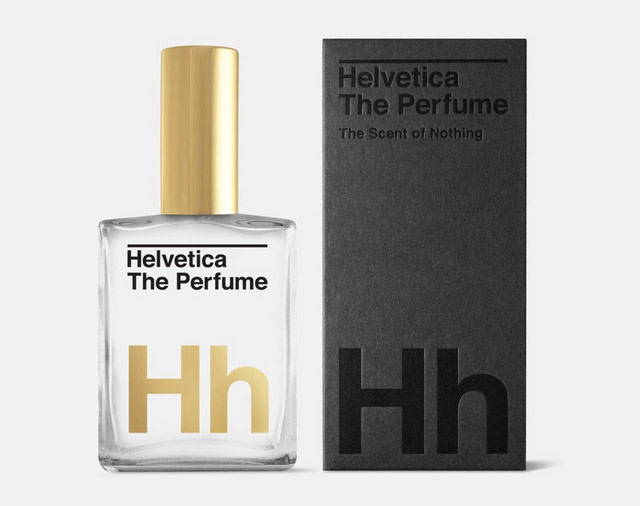
Helvetica has gone on to become arguably the most ubiquitous and widely used typeface in history.
It is in this spirit that we have created the ultimate Modernist perfume — a scent distilled down to only the purest and most essential elements to allow you, the content, to convey your message with the utmost clarity.
Air. Water. You.
2 oz. of distilled water. Precious bodily fluids, Mandrake.
Using a large piece of spandex (representing spacetime) and some balls and marbles (representing masses), a high school science teacher explains how gravity works.
The bits about how the planets all orbit in the same direction and the demo of the Earth/Moon orbit are really neat. And you can stop watching around the 7-minute mark…the demos end around then.
Update: Here’s another video of a similar system with some slightly different demos.
This Lego Mona Lisa is amazing:

Crazy recognizable even with only ~400 pixels. The Girl With the Pearl Earring is pretty good too. Of course, nothing beats Lego Stephen Hawking. (via mlkshk)
In a clip from Eye of the Leopard narrated by Jeremy Irons, we see a female leopard kill a baboon. And then the leopard notices the baboon has just given birth to a tiny baby. Her reaction is unexpected:
In celebration of his 44th birthday, Jay Z ranked his solo albums:
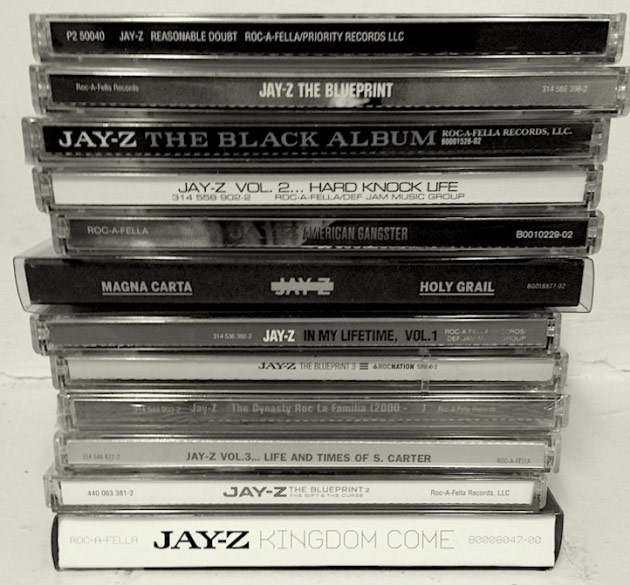
Here’s the annotated list:
1. Reasonable Doubt (Classic)
2. The Blueprint (Classic)
3. The Black Album (Classic)
4. Vol. 2 (Classic)
5. American Gangster (4 1/2, cohesive)
6. Magna Carta (Fuckwit, Tom Ford, Oceans, Beach, On the Run, Grail)
7. Vol. 1 (Sunshine kills this album… fuck… Streets, Where I’m from, You Must Love Me…)
8. BP3 (Sorry critics, it’s good. Empire (Gave Frank a run for his money))
9. Dynasty (Intro alone…)
10. Vol. 3 (Pimp C verse alone… oh, So Ghetto)
11. BP2 (Too many songs. Fucking Guru and Hip Hop, ha)
12. Kingdom Come (First game back, don’t shoot me)
(via @anildash)

As I said last year, the photos are always my favorite end-of-the-year media to check out. It’s only early December, but a few media outlets are out of the gate already with their year-end lists.
Best photos of the year 2013 from Reuters.
The Top 10 Photos of 2013 from Time.
2013 Pictures of the Year from Agence France Presse.
The 80 Most Powerful Photos of 2013 from The Roosevelts.
Las mejores fotos del 2013 from Yahoo En Español.
The 45 Most Powerful Photos Of 2013 from BuzzFeed.
2013: The Year in Photos from In Focus. Here are parts two and three.
2013 Year in Pictures from Big Picture. Here are parts two and three.
Year in Focus 2013 from Getty Images.
Year in Photos 2013 from The Wall Street Journal.
The Year in Pictures from The New York Times.
Do you have a list for this list? Send it along!
From a blog about the science of dogs, a comparison of photos of purebred dogs from 1915 to those of today. You can see how much the dogs have changed in just under 100 years, in some cases for the worse. For instance, the difference in the Bull Terrier (aka the Spuds MacKenzie dog) is marked and a bit disturbing:

Pure breeding has also introduced medical problems for some breeds.
The English bulldog has come to symbolize all that is wrong with the dog fancy and not without good reason; they suffer from almost every possible disease. A 2004 survey by the Kennel Club found that they die at the median age of 6.25 years (n=180). There really is no such thing as a healthy bulldog. The bulldog’s monstrous proportions makes them virtually incapable of mating or birthing without medical intervention.
(via @mulegirl)
In a masterfully edited video, David Ehrlich presents his 25 favorite films of 2013.
Fantastic. This video makes me want to stop what I’m doing and watch movies for a week. It’s a good year for it apparently…both Tyler Cowen and Bruce Handy argue that 2013 is an exceptional year for movies. I’m still fond of 1999… (via @brillhart)
From a 1968 film shot by director Jean-Luc Godard, here’s the Rolling Stones in the recording studio, working on refining Sympathy for the Devil.
(via openculture)
Linda Holmes writes about the gender roles of the main characters in the Hunger Games movies and how unusual they are for a mainstream blockbuster film.
But one of the most unusual things about Katniss isn’t the way she defies typical gender roles for heroines, but the way Peeta, her arena partner and one of her two love interests, defies typical Hollywood versions of gender roles for boyfriends.
Consider the evidence: Peeta’s family runs a bakery. He can literally bake a cherry pie, as the old song says.
He is physically tough, but markedly less so than she is. He’s got a good firm spine, but he lacks her disconnected approach to killing. Over and over, she finds herself screaming “PEETA!”, not calling for help but going to help, and then running, because he’s gone and done some damn fool thing like gotten himself electrocuted.
Mimi Schippers, riffing on Holmes’ piece, argues that Katniss is such an interesting character because she’s not tied to a particular gender…she’s the “movie boyfriend” with Peeta and the “movie girlfriend” with Gale.
Forcing Katniss to choose is forcing Katniss into monogamy, and as I suggested above, into doing gender to complement her partner. Victoria Robinson points out in her article, “My Baby Just Cares for Me,” that monogamy compels women to invest too much time, energy, and resources into an individual man and limits their autonomy and relationships with others. What Robinson doesn’t talk about is how it also limits women’s range of how they might do gender in relationship to others.
It also limits men’s range of doing gender in relationships. Wouldn’t it be nice if Peeta and Gale never felt the pressure to be something they are not? Imagine how Peeta’s and Gale’s masculinities would have to be reconfigured to accommodate and accept each other?
Maybe this is why the end of Catching Fire (minor spoilers!) — Katniss as the cliched irrational hysterical woman who can’t be trusted with information — felt so out of place compared to her gender fluidity throughout the rest of the movie.
In a recent interview, the Coen brothers revealed that their next movie will be “a sandal movie” set in ancient Rome.
Right now, the brothers are plainly excited about what they’re writing, which they proudly explain, is set in ancient Rome. It’s the allure of the unexpected, all over again.
“It’s like: Would you ever do a sandal movie?” laughs Joel. “It’s big,” says Ethan, grinning. “We’re interested in the big questions. And we don’t (expletive) around with subtext. This one especially.”
Though their movies usually revel in the absurdity of life’s predicaments, Ethan promises this film has answers: “It’s not like our piddly ‘A Serious Man.’” Chimes Joel: “That was a cop-out. We just totally chickened out on that one.”
This is what it’s like to be poor orig. from Dec 02, 2013
* Q: Wha? A: These previously published entries have been updated with new information in the last 24 hours. You can find past updates here.
Merck is working on a new insomnia drug that they claim has few of the sometimes nasty side effects of other drugs like Ambien. Ian Parker reports for the New Yorker.
If the Merck scientists succeeded at the F.D.A., they would be the first to bring an orexin-related drug to market. “It’s an amazing achievement,” Richard Hargreaves, the fourth colleague at the Hilton, said. “Everyone should be really proud.” But, he added, “my worry is that a new mechanism is being evaluated on the science of an old mechanism.”
“With Ambien, you’ve got a drug that’s got basically only onset,” Renger said, dismissively. That is, it sends you to sleep but might not keep you asleep. “Suvorexant has the onset, but it has the great maintenance, especially in the last third of the night, where other drugs fail.” And even though suvorexant keeps working longer than Ambien, suvorexant patients don’t feel groggier afterward, as you might expect. Impassioned, Renger imagined himself addressing the F.D.A.: “Why aren’t you giving this a chance?”
“Drugs usually have some side effects,” Schoepp said. “It’s all benefit-risk.” He added, “There is some dose where suvorexant will be ultimately safe-because nothing will happen. If you go low enough, it becomes homeopathic.”
They stood to go to their rooms. Schoepp murmured, “I’d love to take it right now.”

Errol Morris is at it again, publishing book-length blog posts for the NY Times. This time, he’s examining the photograph evidence of Abraham Lincoln and, I think, what those photos might tell us about Lincoln’s death. Here’s the prologue and part one (of an eventual four).
My fascination with the dating and interpretation of photographs is really a fascination with the push-pull of history. Facts vs. beliefs. Our desire to know the origins of things vs. our desire to rework, to reconfigure the past to suit our own beliefs and predilections. Perhaps nothing better illustrates this than two radically different predispositions to objects — the storyteller vs. the collector.
For the collector the image with the crack [in one of Lincoln’s photographs] is a damaged piece of goods — the crack potentially undermining the value of the photograph as an artifact, a link to the past. The storyteller doesn’t care about the photograph’s condition, or its provenance, but about its thematic connections with events. To the storyteller, the crack is the beginning of a legend — the legend of a death foretold. The crack seems to anticipate the bullet fired into the back of Lincoln’s head at Ford’s Theater on Good Friday, April 14, 1865.
It should have a name. I call it “the proleptic crack.”
From Rap Genius, a chart showing mentions in rap songs of popular social sites and apps like Twitter and Instagram:

Compare with the graph for the same terms from Google News:
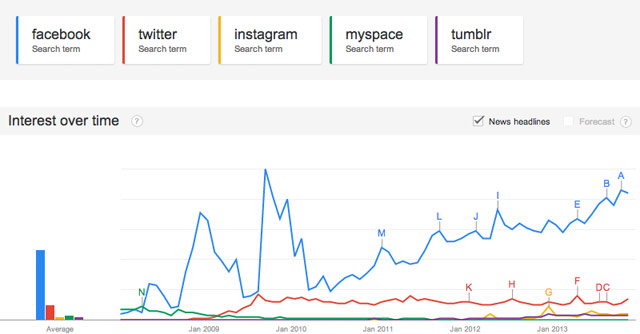
And here’s the graph for general search terms. (I excluded Snapchat from the Google graphs because Google wouldn’t allow 6 search terms at a time…it barely showed up in either case.) Twitter rules the rap roost, but Facebook demolishes everyone in general and news search traffic.
In a video analogue of Alvin Lucier’s I Am Sitting in a Room, this YouTube video is uploaded and then downloaded 1000 consecutive times until the image becomes all artifacts.
(via digg)

Using an iPad app called Procreate, artist Kyle Lambert made this painting of Morgan Freeman. It took him 200 hours. The video of him doing it is mesmerizing:
(via gizmodo)
From the cotton in the fields to the manufacturing machines to the container ships, NPR’s Planet Money looks at the often complex world behind the making of a simple t-shirt.
We flew drones over Mississippi. We got mugged in Chittagong, Bangladesh. We met people whom we’ll never forget — the actual people who make our clothing. At every location we had radio reporters and videographers.
This is what it’s like to be poor orig. from Dec 02, 2013
* Q: Wha? A: These previously published entries have been updated with new information in the last 24 hours. You can find past updates here.
A few weeks ago, David Sedaris had a piece in the New Yorker about his recently deceased sister Tiffany.
In late May of this year, a few weeks shy of her fiftieth birthday, my youngest sister, Tiffany, committed suicide. She was living in a room in a beat-up house on the hard side of Somerville, Massachusetts, and had been dead, the coroner guessed, for at least five days before her door was battered down. I was given the news over a white courtesy phone while at the Dallas airport. Then, because my plane to Baton Rouge was boarding and I wasn’t sure what else to do, I got on it. The following morning, I boarded another plane, this one to Atlanta, and the day after that I flew to Nashville, thinking all the while about my ever-shrinking family. A person expects his parents to die. But a sibling? I felt I’d lost the identity I’d enjoyed since 1968, when my younger brother was born.
On Wicked Local Somerville, a close friend of Tiffany’s lets Sedaris have it with both barrels:
I found David Sedaris’ article, “Now we are five,” in the Oct. 28 New Yorker to be obviously self-serving, often grossly inaccurate, almost completely unresearched and, at times, outright callous. Some of her family had been more than decent, loving and kind to her. “Two lousy boxes” is not Tiffany’s legacy. After her sister left with that meager lot, her house was still full of treasures.
And this:
Not only could Tiffany have been saved, she could have blossomed. While her friends had done pretty much all they could, at least half of her mental health issues stemmed from, or were exaggerated by, her poverty and unstable housing situation, but also from David’s occasional mockery of her in his writings.
(thx, matt)
The Rolling Stones favorite American dish is something the band invented called Hot Dogs on the Rocks:
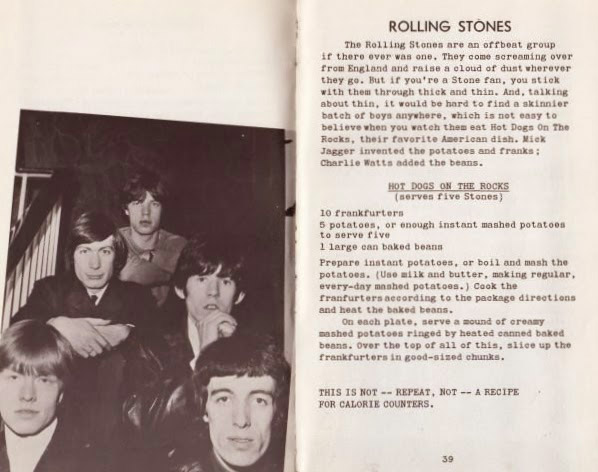
10 frankfurters
5 potatoes, or enough instant mashed potatoes to serve five
1 large can baked beans
Prepare instant mashed potatoes, or boil and mash the potatoes. (Use milk and butter, making regular, every-day mashed potatoes.) Cook the frankfurters according to the package directions and heat the baked beans.
On each plate, serve a mound of creamy mashed potatoes ringed by heated canned baked beans. Over all the top of this, slice up the frankfurters in good-sized chunks.
Emily from Dinner is Served made some Hot Dogs on the Rocks; this is what the finished product looks like:

The recipe is from a 1967 “scene-makers cook book” called Singers & Swingers in the Kitchen (at Amazon). In addition to the Stones’ contribution, the book contained recipes like Paul Anka’s Party Spaghetti, Crepes Suzette by Liza Minelli, Leonard Nimoy’s Cold Soup Nimoy, and Barbra Streisand’s Instant Coffee Ice Cream. I dunno…I think I’d take burgers from Sinatra, Dean Martin, or even Hemingway over any of this celebrity fare. (via if charlie parker was a gunslinger)
Kinja user KillerMartinis provides some perspective on what it’s like to live in poverty.
Rest is a luxury for the rich. I get up at 6AM, go to school (I have a full courseload, but I only have to go to two in-person classes) then work, then I get the kids, then I pick up my husband, then I have half an hour to change and go to Job 2. I get home from that at around 1230AM, then I have the rest of my classes and work to tend to. I’m in bed by 3. This isn’t every day, I have two days off a week from each of my obligations. I use that time to clean the house and soothe Mr. Martini and see the kids for longer than an hour and catch up on schoolwork. Those nights I’m in bed by midnight, but if I go to bed too early I won’t be able to stay up the other nights because I’ll fuck my pattern up, and I drive an hour home from Job 2 so I can’t afford to be sleepy. I never get a day off from work unless I am fairly sick. It doesn’t leave you much room to think about what you are doing, only to attend to the next thing and the next. Planning isn’t in the mix.
Her response to the first (agressively negative) comment is worth reading as well.
Update: We can’t have nice things on the Internet…looks like KillerMartinis was not exactly forthcoming with regard to her financial status. (thx, @j4)
Update: Michelle Goldberg at The Nation fleshes out KillerMartini’s back-story. (thx, @tkudo)
You’re probably sick of this news already, but Amazon says they’re working on 30-minute package delivery by drone.
The goal of this new delivery system is to get packages into customers’ hands in 30 minutes or less using unmanned aerial vehicles.
Putting Prime Air into commercial use will take some number of years as we advance the technology and wait for the necessary FAA rules and regulations.
Back in January, riffing off a piece by John Robb, I speculated that Amazon would be an early mover into delivery-by-drone:
More likely that Amazon will buy a fledgling drone delivery company in the next year or two and begin rolling out same-day delivery of items weighing less than 2 pounds in non-urban areas where drone flights are permitted.
Tyler Cowen is already out of the gate this morning talking about the economics of drone delivery:
You would buy smaller size packages and keep smaller libraries at home and in your office. Bookshelf space would be freed up, you would cook more with freshly ground spices, the physical world would stand a better chance of competing with the rapid-delivery virtual world, and Amazon Kindles would decline in value.
But for now, Amazon Prime Air sure is providing lots of Cyber Monday PR for Amazon.
Archives · November 2013








































Stay Connected